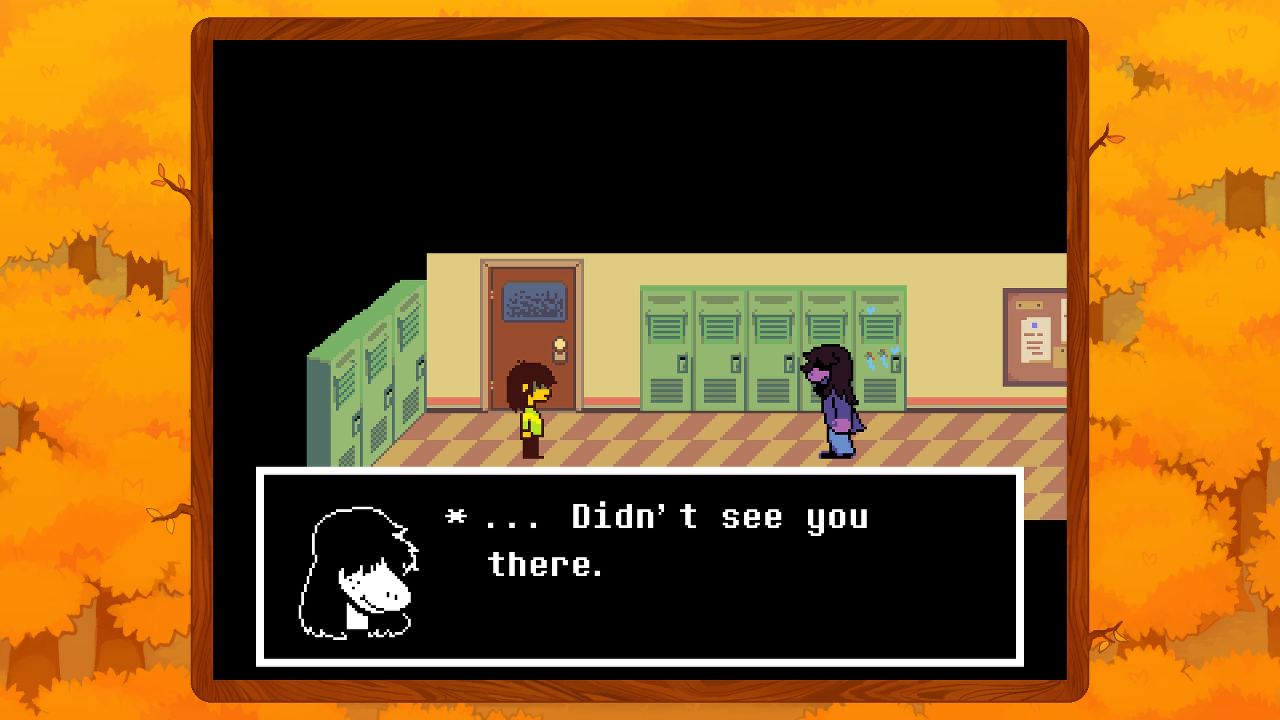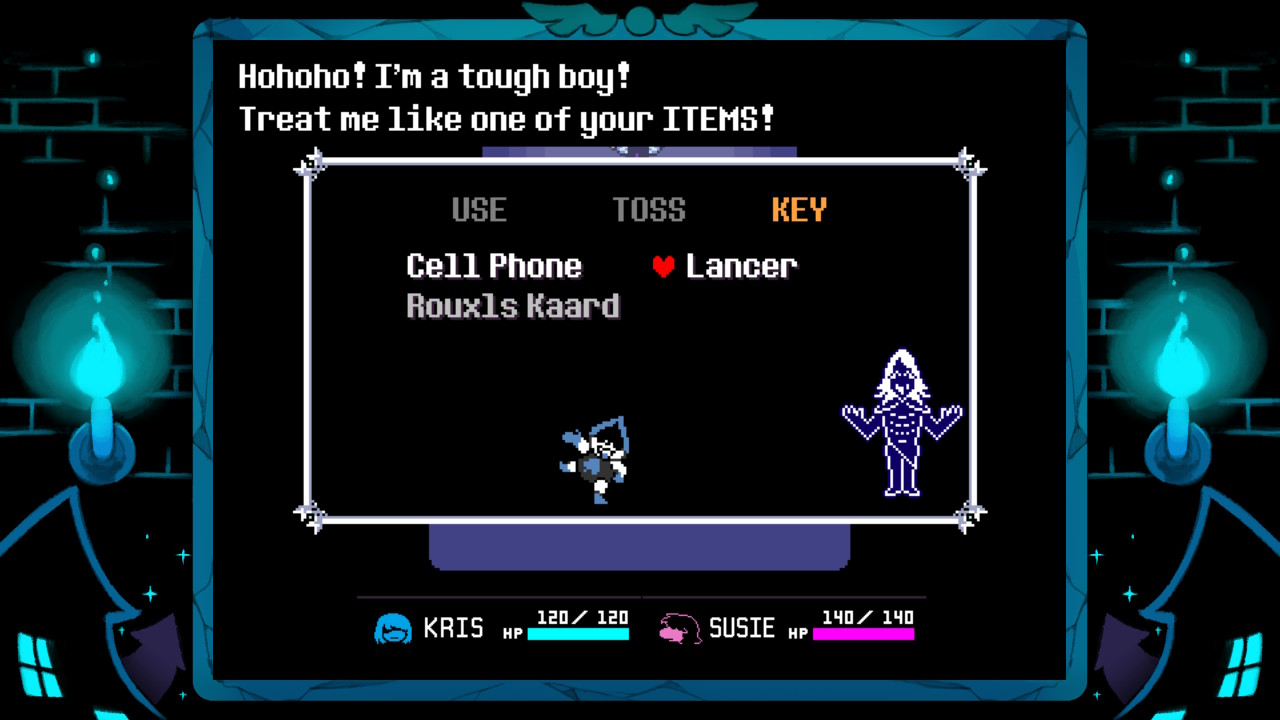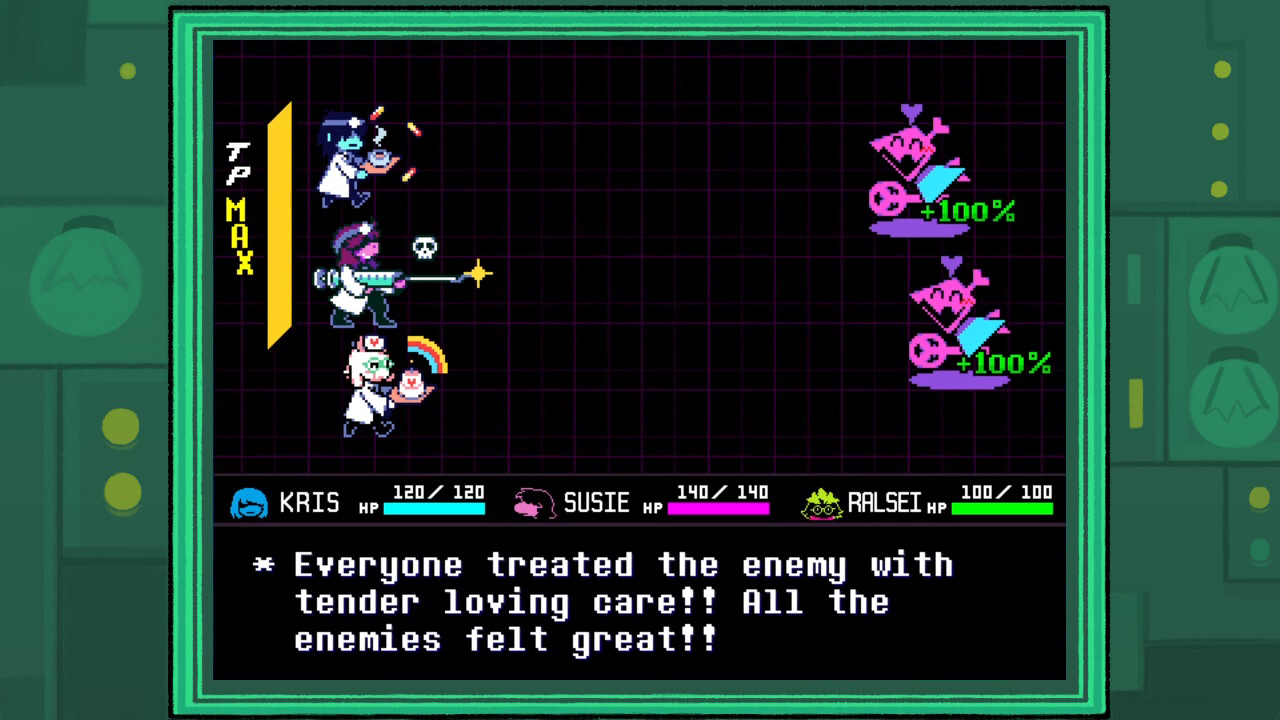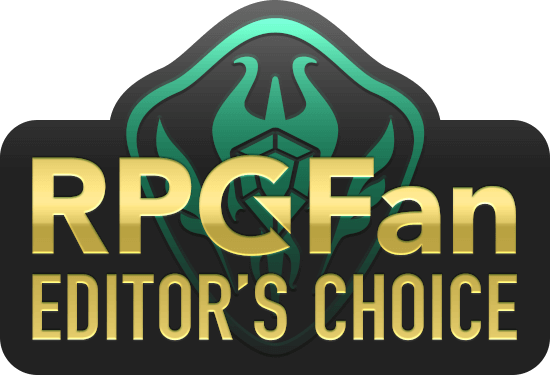Deltarune is an RPG “intended for people who have completed Undertale,” and so is this review. It’s hard to talk about Deltarune without talking about Undertale—and not nearly as interesting, to be honest. Unlike its anagrammed predecessor, Deltarune is being released episodically, demanding an excruciatingly exciting wait between content. Considering Chapters 1+2 had been released for *FREE* on all platforms in 2018/19 and 2021, respectively, you can bet this isn’t my first rodeo with them.
Like many other fans of Toby Fox’s work, I saddled up for a new playthrough to prep myself for the imminent release of Chapters 3+4. It was an enlightening one, too. For a game that tells us multiple times that “your choices don’t matter in this world,” I certainly got to see some things play out differently due to my choices. With this added perspective, waiting for future chapters is going to be even tougher.
Chapter 1 originally released by itself on October 31, 2018, and wow was that the most exciting Halloween I’ve had since my Trick or Treating days. It’s a fun few hours to set the stage thematically and mechanically, even if it didn’t quite blow away my unfairly high expectations. After the game prompts you to create and name an avatar that it then mysteriously discards, you get introduced to protagonist Kris. Kris is a teen and the sole human raised in a town of monsters mainly populated by characters from Undertale, yet who seem to have no recollection of Undertale’s events. It becomes evident that Kris is socially reclusive in a pitiable and slightly disconcerting way, although Fox’s trademark humor does a lot to distract you from whatever is going on behind the curtain with them.
After an amusing representation of the social horror of high-school group projects, Kris gets paired with class bully Susie. Susie is a monster, literally and figuratively, at least in how she chooses to present herself. The two go to fetch some chalk from their school’s closet, yet the door turns out to be a portal to the world of the Darkners. Here, they meet the impossibly kind Darkner Prince Ralsei, who tells them that the trio are “heroes” foretold by the Legend of Delta Rune. With this, we have ourselves an RPG party: Kris, who has the unique power to Act and direct battles towards a non-violent resolution should the player choose; Susie, whose violent strength is her main asset; and Ralsei, who can heal allies and Pacify tired enemies.
Similar to Undertale, battles are a mix of a turn-based ‘attack’ phase and a bullet-hell style ‘defense’ phase. Aside from the new party system, Deltarune introduces Spells that you cast with TP and can serve violent, pacifist, or neutral functions. The party shares a single TP pool that resets with every battle. You can amass TP by perfecting the timing on your Fight commands, choosing to Defend, or closely grazing enemy attacks in the bullet-hell dodging. I cannot offer enough praise for how much incentivized strategy and risk this adds to the mix. So far, there are only a handful of spells between the three playable companions, but the system has enormous potential to flourish in later chapters.
Thing is, Susie doesn’t want to play hero. This narrative premise makes for a smart subversion of party-based combat and a clever way for Deltarune to push its idea that the Fight/Act dichotomy the game carries over from Undertale is no longer mutually exclusive narratively or mechanically. For most of the chapter while she’s in your party, Susie Fights enemies and refuses to be told otherwise. You can either lean into Susie’s bloodlust by Fighting alongside her or use Act with Ralsei to try to warn enemies away from Susie’s gleeful axe swings and still end the battle peacefully. Not that it drastically changes the game, but you do see some different NPC dialogue and even a slightly modified resolution to the Chapter’s story depending on if you leaned heavily one way or the other. This is Deltarune’s first indicator that your choices can, indeed, matter.
After Kris and Susie first emerge from the Darkner world, it’s clear that it is fuelled (at least in part) by Kris’ imagination. At the same time, no one who enters the Darkner world seems aware of that. The impacts of its events are also more tangible than mere pretend play and stranger implications start coming to light. Toby Fox is a master of dispersing curious little details throughout his games that prompt obsessive analysis. As much as I wish I didn’t have to wait, this sense of growing mystery lends itself to Deltarune’s episodic release format perfectly.
Deltarune’s episodic structure feels purposeful, introducing a new imaginary world and character focus with each new chapter. Both these chapters contain self-contained stories while simultaneously developing the cast of the Lightner world. The storylines give these thoughtfully written characters a space to work through their real-world issues, with Susie learning to embrace friendship serving as the first arc. The adolescent cast is written with an empathetic balance of amusing cringe and emotional depth.
Remember when I said Chapter 1 didn’t initially blow me away? Chapter 2 flipped all tentative doubt into rabid hype for every chapter to come. We get introduced to a hub town complete with arena challenges and monster recruiting. Moreover, the decision to Fight or Act your way through battles now differs in terms of rewarding you with becoming “stronger” (with tangible stat upgrades) or a more joyfully populated town, respectively.
Most significantly, the personality puzzle-solving of Act-ing is more elaborate and satisfying than ever in Chapter 2. On top of the team-up Act commands introduced in Chapter 1, party members can now also Act individually. This allows for strategic min-maxing on every turn for each new group of enemies you encounter. Fighting, meanwhile, is the same impersonal timing-based challenge. What’s interesting, though, is that there will be times when you need to Fight or that you may want to. Without a binary morality scale essentially predetermining the decision for you, you are freer to follow your heart in such moments. And often, subtle dialogue or story shifts acknowledge these choices.
That flexibility is there if you’re doing any normal playthrough. Chapter 2 also has a secret alternate route—now often referred to as the Snowgrave Route—that requires very specific conditions to begin and progress. It significantly changes the development of this chapter’s focal character: Kris and Susie’s anxious classmate, Noelle. I won’t spoil the details, but much like Undertale’s Genocide route, I think this is essential content to experience (or at least read up on) if you want to better understand what Deltarune is doing with its world and characters. It’s emotionally draining to push yourself through, but what occurs is also more nuanced and intriguing than acts of pure evil. Perhaps the biggest question going into Chapters 3+4 is if other characters will get an equivalent of the Snowgrave Route and the degree to which these alternate runs impact what happens in the Lightner world going forward.
On top of all this fun and intrigue, Deltarune does its best to build on Undertale’s style. The graphics still adhere to a retro simplism used effectively for humor and emotional subtlety. There’s far more detail in the environments, battle screens, and sprite animations this time around, too (courtesy of Fox’s main collaborator, Temmy Chang). These presentation upgrades help it stand out as a true successor. The soundtrack is, of course, excellent. It’s hard to follow the peaks Undertale achieves with its OST, but the seeds have been planted: meaningful use of motifs, vibey level music, and boss themes that go hard.
Memorable bosses was one of Undertale’s finest strengths. Alongside the OST, this is the other area where I feel Deltarune can’t quite keep up so far. It’s not for lack of trying, though. Attacks are always engaging and there are even some genre-bending concepts that keep encounters fresh. Yet Deltarune doesn’t have the luxury of conciseness. I love that the game will be so much longer because it’s a blast to play, but some of the content can feel fluffier as a result. However, there are exceptions with each chapter’s secret boss. Banging my head against these two mega challenges (and along to their accompanying themes) was easily the most fun I had in the game so far. They are also fascinating characters. Seek them out if you haven’t yet had the pleasure/pain.
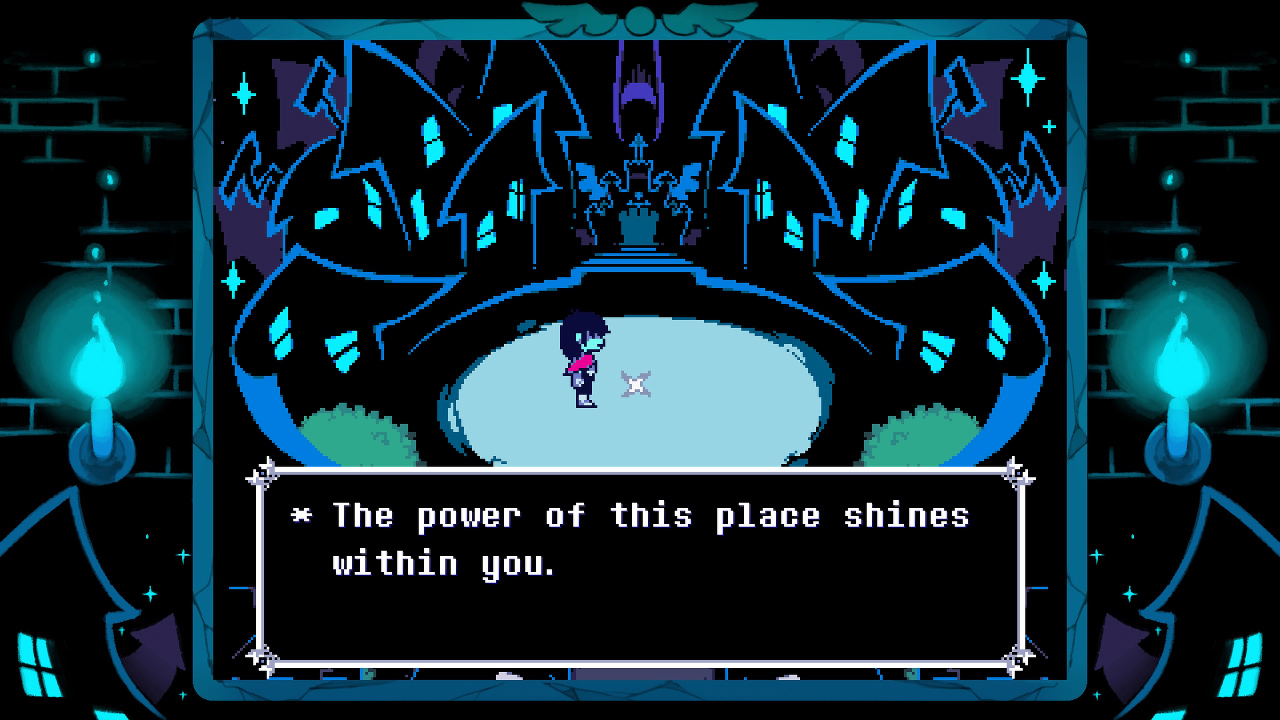
For better or worse, Deltarune is deliberately being developed in Undertale‘s shadow. So far, it’s doing an admirable job following up. I’m not sure if it’ll achieve the iconic highs, cultural impact, or effortless thematic unity, but it’s already got a lot to offer. Chapter 2 is more consistently engaging mechanically than Undertale, and there’s much more of this game on the way. If Undertale achieves the immaculate confidence and unity of Dragon Quest games, then Deltarune swings for the spectacle and multifaceted characterization of Final Fantasy. Perhaps it’s no coincidence how both games’ battle screens reflect those respective series.
With that said, Deltarune’s first two chapters feel like a satisfying experience in their own right. Their combined length already exceeds an Undertale run, and with Chapters 3+4 on the horizon, we’ll have access to allegedly more than half of its overall content. That’s a lot of a great game! Unless you’re opposed to playing through a game begging for repeated visits more than once, or cliffhangers negatively affect your well-being, I don’t think there’s a reason to wait to acquaint yourself with this world. Chapter 1 and especially Chapter 2 have set the grounds for what I have no doubt will surpass Undertale mechanically. What remains to be seen is where this story goes.

